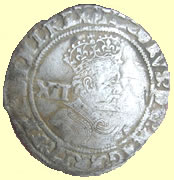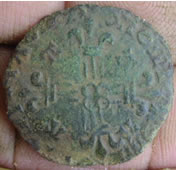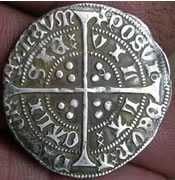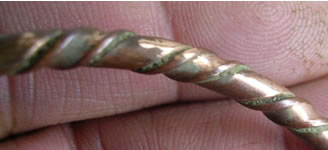

Metal detecting holidays in England with the World's most successful metal detecting club.
Twinned with Midwest Historical Research Society USA
Oct 2007 - March 2008 Latest News Page |
||||||||||||||||||||||||||||||||||||||||||||||||||||||||||||||||||||||||||||||||||||||||||
23rd Feb 2008 Exports completed - Updated export page All export applications are now complete, check the members forum for full finds lists. I have updated the export page with a sample finds list of Chicago Reid's hunt to show you the detail required for the export license applications. Every find over 50 years old has to photographed and the FLO selects from this lists those finds to be taken to the museum to be examined and recorded.
I have been adding more of our finds to our Foundintheground searchable databases. Type in by any keyword to search. We still have a whole bunch of unknown do-dads posted on the forums if you can help ID them. Updated the Romano/British finds page with the latest finds |
||||||||||||||||||||||||||||||||||||||||||||||||||||||||||||||||||||||||||||||||||||||||||
21st Feb 2008 Land news, more unpublished finds - hunts start again in a week
|
||||||||||||||||||||||||||||||||||||||||||||||||||||||||||||||||||||||||||||||||||||||||||
20th Feb 2008 More unpublished finds and ID's
After taking a look at the pictures you sent, I am sorry to tell you that we cannot identify it-but, as you stated, it may be a medal because it has no denomination on it. Best of luck identifying this coin, and again, apologies that we cannot further help you. If you have any other inquiries in the future, please do not hesitate to ask!
|
||||||||||||||||||||||||||||||||||||||||||||||||||||||||||||||||||||||||||||||||||||||||||
17th Feb 2008 More unpublished finds
|
||||||||||||||||||||||||||||||||||||||||||||||||||||||||||||||||||||||||||||||||||||||||||
15th Feb 2008 More finds - New land research Canadian Rod has started his research on the new land and is already finding some very interesting Archeology on it, he will be posting more info on the members forum. He is also preparing the new maps ready for the 1st March when we begin searching it. I have posted more complete finds lists on the members forum, please don't send me find locations yet until the museum selects those required to be taken in and added to the National databases. They currently have over 350 artefacts deposited with them so it will be while before I publish the next find list grid references needed. The latest set of detailed reference books are still proving invaluable to ID finds that initially appear to be Georgian but are a lot earlier. Roman circular mounts look like just like Georgian draw pull back plates and are very tricky to differentiate, as are Roman copper alloy domed studs. I have just started to build a Roman Military page of our finds Roman Military.
Roman circular mounts
Roman copper alloy domed studs I get most of my specialist books from Roger at Spin-a- disc http://www.metaldetectingbooks.co.uk/. He can get you any obscure or out of print items if you give him a ring. If you finding Roman items then here are my favourite reference books. I have a whole series of old British museum books on Roman finds but these below are the most detailed and easy to use. Roman Military equipment - Bishop & Coulston Roman buckles and Military fittings - Appeals and Laycock Finds from Roman Aldborough - Bishop Prehistoric and Roman studies - British museum
|
||||||||||||||||||||||||||||||||||||||||||||||||||||||||||||||||||||||||||||||||||||||||||
11th Feb 2008 More finds and land for the 1st March I went to see the new farmer today that has asked us to search his land . He showed me all the maps of his plot and it is another huge area being just under 700 acres. It has never been detected before so lots of hot spotting for us to do from the 1st March although it has a noted 11thC Priory on one of the fields that gives it a huge potential. That probably takes us to just over 200 fields to cover in March !!
|
||||||||||||||||||||||||||||||||||||||||||||||||||||||||||||||||||||||||||||||||||||||||||
8th Feb 2008 - More unpublished finds and ID's More interesting do dads out of the export pouches. More complete finds list with pictures just posted on members forum.
I am not having much luck researching this earlier lead document seal find with heraldic shield impression. It has a medieval armour helmet facing left at top of shield and Barry wavy of six argent. 41.40 mm L x 38.20mm W. If you can help ID it please drop me a mail. Here is a link for a great web site for heraldic info
|
||||||||||||||||||||||||||||||||||||||||||||||||||||||||||||||||||||||||||||||||||||||||||
7th Feb 2008 Gerry's Barn Hunt - one space free
Email Jerry at gerrys1det@cableone.net. for more info. Check out his site with pictures and training he gives on a machine if you buy it from his shop http://www.gerrysdetectors.com/train-p1.asp
|
||||||||||||||||||||||||||||||||||||||||||||||||||||||||||||||||||||||||||||||||||||||||||
5th Feb 2008 More unpublished finds - Tim's ID's More individual find lists just published on members forum.
He also ID'd a button that I initially thought was military as an early railway button.
|
||||||||||||||||||||||||||||||||||||||||||||||||||||||||||||||||||||||||||||||||||||||||||
3rd Feb 2008 Busy recording finds - more land on offer I an still busy working through the export pouches and trying to ID unknown finds. A particular Jetton has me stumped and I have the huge Mitchiner bible on these finds. It is a 14thC shield of France type but instead of the classic Fleur De Lis it has 3 pine trees and a bunch of foliage in a shield. The reverse is the classic triple stranded cross fleuretty with quatrefoil at centre and at the end of each arm, in ornamental 4 arched tressure. If any one can ID this fascinating find then drop me a mail.
14thC French Jetton - not in the ref books
I dropped off over 350 finds with their find spots to Colchester Museum for recording on Thursday and these will be input onto the the National database. Check their database here which is great for helping to ID any finds you make. http://www.finds.org.uk/ . If you have any finds for recording then drop them into your local Finds Liaison Officer. If you click on our exporting page there is a finds recording template you can download and use. Sal posted this screen print below of his Saxon gold find on the forum which is now on line on the Fitzwilliam Museum National database for Early Medieval coinage. What a stunning find, English Saxon gold is the rarest type of coin finds there are.
I went to see one of our new landowners and his wife who are very keen on the history of their land with our latest discoveries. They have 700 acres of undetected land that we have only started searching at the end of last season. Canadian Rod who does the historical research of our sites produced a huge laminated early map of their site which showed old water courses and early houses which they were fascinated by. The Chicago team this season found an amazing Roman area on this land which the museum have suggested is perhaps an offering site after I have taken in several votive offerings to be further ID'd by the museum. I produced a large coloured portfolio of the Roman finds for them to keep and also the Saxon artefacts we have been finding in another area of their site. They have offered us another new undetected farm in the local area which is owned by a relative. I will be seeing the new landowner this week and hopefully get permission so we can make a start searching it in the second half of the season.
|
||||||||||||||||||||||||||||||||||||||||||||||||||||||||||||||||||||||||||||||||||||||||||
29th Jan 2008 Royal mint study - New history of village shops - more finds
'Ancient religion was more concerned with everyday problems than the afterlife. Worshippers would make a declaration (nuncupatio) that if the deity heard their prayer - say for a cure, a safe journey, or a bountiful harvest - they would pay them back by setting up an altar, sacrificing a pig, or offering up a treasured artefact'.
Amazing Roman bronze artefact 35.8g, 36.46mm W x 14.73mm H - votive offering pots
'As someone who is making a special study of the Sudbury halfpenny token of 1793, I was interested to see on your informative website that specimens of these tokens are being discovered by detectorists, presumably in the Colchester area. The geographical extent to which these tokens may have circulated beyond Sudbury is of particular relevance to my study and I wonder, please, if it is at all possible for you to tell me where the findspots are.'
'I am writing a book on the history of the village shop for Shire publications to be published later this year. To this end I am seeking an image of a collection of trade tokens and wondered if you would be able to help me in this matter. I would be very grateful if you could assist me in any way and I would of course be willing to credit your club in the acknowledgements'.
I responded that he can use any pictures from our site as one of the main purpose of us recording every find we make and publishing it on the net is to improve history. Great to see the information we collect being put to good use. Check out the 17thC token page with all the trade farthings we are finding I have also updated the Jetton page and managed to ID an outstanding find that I initially though was another trade farthing but is an 18thC Jetton.
Johan Jacob Dietzel of Nürnberg who made this sometime between 1711 and 1748. I have updated the forum competition page and added the latest missed hammered silver finds to the total which now stands at 155 so far for the year.
|
||||||||||||||||||||||||||||||||||||||||||||||||||||||||||||||||||||||||||||||||||||||||||
28th Jan 2008 More finds and exports More full finds lists and coloured pictures of the guys export pouches just posted on the members forum.
|
||||||||||||||||||||||||||||||||||||||||||||||||||||||||||||||||||||||||||||||||||||||||||
24th Jan 2008 More unpublished finds - Axe heads
Great news story about a guy finding 500 Bronze age artefacts - Click here
More cleaned up and unpublished finds including an amazing discovery of a Kemper Military School Boonville Mo button and an early silvered pin. Lots more to post yet.
|
||||||||||||||||||||||||||||||||||||||||||||||||||||||||||||||||||||||||||||||||||||||||||
20th Jan 2008 More unpublished finds - buttons and coppers Lots of interesting buttons out of the export pouches and the odd really nice copper worth photographing. I was amazed to see that the 94th Regiment of Foot button is not in my reference books. They were formed in 1802 and disbanded in 1881. It is nice to see an example of a great condition early and late bust Victorian large penny next to each other.
|
||||||||||||||||||||||||||||||||||||||||||||||||||||||||||||||||||||||||||||||||||||||||||
19th Jan 2008 More unpublished finds - Potential treasure and unknown coin - more ID's Got an e-mail from Tim on the latest button ID's. 30th Bn. E. Lancashire Reg't, (30th Reg't of Foot, Cambridgeshire) (1881-1901) & Oxfordshire & Buckinghamshire Light Infantry (1908 - 1946). Interesting that he has the maker Clancy listed as different dates than in my button guide.
He has more supporting evidence that his date is correct '1881 - Under Cardwell's reforms the 30th Regiment of Foot, united with 59th (2nd Nottinghamshire) Regiment of Foot, to become 1st Battalion, The East Lancashire Regiment' I have reported the silver clasp item below as potential treasure to the museum as the crude decoration is possibly over 300 years old. I cleaned up a very interesting hammered copper coin that is not English and requires more investigation. If you know what it is drop me a mail please
Vickers F.B.2 (1914) |
||||||||||||||||||||||||||||||||||||||||||||||||||||||||||||||||||||||||||||||||||||||||||
17th Jan 2008 Museum feedback - line drawing and ID's NS Andy's Saxon amazing strap end find has now been drawn by the museum.
C10thC Anglo Saxon strap end 18.48g, 34.41mmL x 18.33mmW x6.53mm H I have just got back the confirmed ID's of the finds that were taken previously to the museum for evaluation. Chicago Keith: Late Iron Age – early Roman terret fragment Cal Jim : Post Medieval spur fragment - c 16thC Ohio Mike :Post Medieval knife stop
I originally thought this was Saxon so it is a lot earlier than I thought
Penn Christie's : 11000 BC Mesolithic Axe
I have just posted a list on the members forum for the next batch of finds that the museum want to view and record. Please review you list and confirm the find spots by e-mail. |
||||||||||||||||||||||||||||||||||||||||||||||||||||||||||||||||||||||||||||||||||||||||||
15th Jan 2008 More unpublished finds and updates Some great missed finds out of the export pouches including a couple of unrecorded military buttons I have sent off to Tim Burton the button expert for further ID. There is a really neat looking bronze Roman cotter/clevis pin that will go off to the museum for further investigation. The bronze Medieval knife pommel is the second one of that design we have found with a Fleur di Lis top, the previous one came back from the museum ID'd as Medieval. These are from a very small knife perhaps a domestic type.
|
||||||||||||||||||||||||||||||||||||||||||||||||||||||||||||||||||||||||||||||||||||||||||
12th Jan 2008 More unpublished finds and updates What should have been a simple ID of a Scottish regimental button with a good back mark has us stumped so far. Tim Burton has replied' It looks like a generic Scots Regimental bandsman button' but he can also find no reference to it yet. Information on a Morgan 6 pence silver token find is scare but I found an advert in the The Star, London, June 24th, 1813. I have updated the following page with latest finds.
|
||||||||||||||||||||||||||||||||||||||||||||||||||||||||||||||||||||||||||||||||||||||||||
11th Jan 2008 More updates ID's and unpublished finds Updated the following pages with latest finds. More full export finds lists published on members forum.
Tokens 15thC to 17thC lead - Starting to add 17thC lead tokens to this page
Base metal coins - added loads of the early coppers found in great shape
Mounts - Updated the mount page that now includes all periods
Thimbles - - Updated the thimble page with also some history
|
||||||||||||||||||||||||||||||||||||||||||||||||||||||||||||||||||||||||||||||||||||||||||
10th Jan 2008 More unpublished finds cleaned up - more find pages
Full export lists with pictures and ID's are posted on the members forum.
|
||||||||||||||||||||||||||||||||||||||||||||||||||||||||||||||||||||||||||||||||||||||||||
8th Jan 2007 More unpublished finds and Trade tokens I spent an age trying to ID a 17thC token find that had the same IG mark as a Joseph Gleson of Dedham Essex but I could only read a partial legend Stoke Nailon. Finally after a couple of hours I found it in the Suffolk reference book and it is a misspelling on the legend for Stoke by Nayland Suffolk. I checked our other Joseph Gleson finds on the 17thC token page and I had also attributed another John Groome incorrectly as the IG mark is very similar. Would you believe that checking the next export pouch there was a perfect John Groome 17thC token with full legend so now we have found three !! Another nice button find and only the 2nd one we have found is a Royal Harwich Volunteers button, these is still unlisted in any reference books.
Probably Napoleonic period
|
||||||||||||||||||||||||||||||||||||||||||||||||||||||||||||||||||||||||||||||||||||||||||
7th Jan 2008 More ID's, finds and exporting Back from the Christmas and New Year break and it is now full steam ahead with the exporting and doing more work on the outstanding ID's. I will be posting more of the unpublished finds like these below and full finds lists with photo's on the members forum. I have added a great news story about an ancient pan which may have been a souvenir from Hadrian’s Wall that will go on show on Tyneside today, amazing find.
Crude decorated copper alloy strap end - Early Medieval
Roman bronze military helmet trim
Unusual Tudor period buckle fragment Tim Burton has just sent me some updates on outstanding button ID's
I have cleared up any outstanding paperwork during the break and have start the exporting procedure. The trial of the new process last season was successful so we have adopted the system below. Every single metal find is now re-examined to ensure each piece is recorded and photographed in preparation of the export applications. I will be posting any finds we missed while the hunts were in full flight. 1- Normal detailed finds lists with export application form sent to MLA (Export Duty) 2- Detailed finds lists also sent to the Finds Liaison Officer at Colchester museum at the same time 3- Full size pictures of all finds electronically mailed to MLA and FLO and finder 4- FLO selects the find/finds from the list that need to be taken into Colchester museum for further investigation and recording 5 Finds are taken to Colchester museum 5- FLO signs off on the finds list and informs export duty so license can be granted. |
||||||||||||||||||||||||||||||||||||||||||||||||||||||||||||||||||||||||||||||||||||||||||
29th Dec 2007 Exporting and More ID's I am busy working on ID'ing some of the more obscure pieces found prior to export. Two very useful new reference books are 'Roman Buckles and Military fittings', written by Andrew Appels and Stuart Laycock and 'Finds from Roman Aldborough'. Both have very detailed drawings. Interesting to note that both the Romans and Saxons were very keen on the dot and circle decoration like the one below on this strap end.
Fragment of a late Roman strap end with ring and dot pattern - similar to an amphora type 11.14g, 37.76mm L 24.89mm W
Romano/British
mount - currently with Colchester museum being evaluated
38.68g,
55.64mm L x 15.43mm W x33.39mm H
Roman period bowl with hanger 35.86mm L x 24.99 mm W - currently with Colchester museum being evaluated
|
||||||||||||||||||||||||||||||||||||||||||||||||||||||||||||||||||||||||||||||||||||||||||
23rd Dec 2007 More extracts of our finds from the Annual treasure report - outstanding ID's Record Gold Treasure Trove Found click for Global News Page The new year is going to very busy compiling the latest export licenses and getting the outstanding ID's back from Colchester museum. I still have a whole raft of unpublished buttons to ID. The first half of the season was amazing in terms of rare military buttons from our POW site. I have just sent off another bunch to Tim Burton our military button expert. If you can help with ID'ing any buttons all unknowns are always posted on the foundintheground forums.
3 - 17thC silver buttons with a combination of hearts, flames, crown and arrows. Issued to commemorate the marriage of Charles II. These are currently on display in Colchester museum. Our other series of silver button finds have either been declared treasure or disclaimed and returned to finder. These will appear in the next issue of the Annual Treasure report.
|
||||||||||||||||||||||||||||||||||||||||||||||||||||||||||||||||||||||||||||||||||||||||||
22nd Dec 2007 - Updated more pages with latest finds
|
||||||||||||||||||||||||||||||||||||||||||||||||||||||||||||||||||||||||||||||||||||||||||
20th Dec 2007 Added a global news page - More of our finds from the Annual Treasure Report Added a new page to the site for interesting Global News where I will post any related topics to finds both here and abroad. The latest post is fascinating, the only lead curse on a Roman emperor ever found, with a Roman gold coin. Click on the thumb nail pics to enlarge
850BC Axe hoard - currently on display in Colchester museum |
||||||||||||||||||||||||||||||||||||||||||||||||||||||||||||||||||||||||||||||||||||||||||
19th Dec 2007 Updating searchable database - Annual Treasure report detailing our finds I have updated the foundintheground searchable database with more silver and gold coin finds. Use these databases to search for specific coins by any key words.
C 1640 Charles 1st bust - 0.58g, 13.54mm L This superb Charles 1st loyalist pendant was previously declared treasure and is currently being purchased by Colchester museum. I have updated the Hoard and Treasure Page with the lastest information on outstanding finds reported to the museum. The latest Annual Treasure Report this year issued by the DCMS lists a large number of our treasure and hoard finds from the past. It takes several years for items declared treasure to finally appear in this report. Some of our finds are currently on display at Colchester museum having been purchased by the museum under the Treasure Act. All proceeds are split 50/50 by law with the landowner and finder. See Hoard and Treasure page for more details on each find. Click on the page thumb nails below for larger view of the write ups that appeared in the report. I have several more to post yet including Mass Bruce's excellent 850BC axe hoard.
Mixed Celtic gold and Roman Republican silver hoard Fig 422.1, 422.2,422.3.
There are two of our gold rings finds on this page. Fig 314 and Fig 317. The superb 17thC engraved gold mouring ring is currently on display at Colchester museum.
4thC Roman gold ring - currently on display at Colchester museum
Anglo Saxon gold dagger pommel - currently on display at Colchester museum |
||||||||||||||||||||||||||||||||||||||||||||||||||||||||||||||||||||||||||||||||||||||||||
15th Dec 2007 Nice Testimonial - More updates and two new dress guides Got a great e- mail in from Louisiana Sal that I have added to the testimonial page.
I have created a new page with our 16th and 17th artefacts and where they fit on a man of the period. Click on the pictures to enlarge or go to the new Dress Guide Page
Updated the following pages with latest finds
|
||||||||||||||||||||||||||||||||||||||||||||||||||||||||||||||||||||||||||||||||||||||||||
14th Dec 2007 More updated pages Updated the following pages with latest finds
William IIII to Victorian milled coins 1830 to 1901
Charles II to Queen Anne early milled silver coins
|
||||||||||||||||||||||||||||||||||||||||||||||||||||||||||||||||||||||||||||||||||||||||||
13th Dec 2007 More updated pages Updated the following pages with the latest finds. I still have the following 18thC Conder type token I am trying to ID. If you know what it is drop me mail please or post info on Foundintheground forum.
18thC Conder (Condor) token
|
||||||||||||||||||||||||||||||||||||||||||||||||||||||||||||||||||||||||||||||||||||||||||
11th Dec 2007 Current research - Hammered silver pages updated Special thanks to Canadian Rod who is our historian and does extensive research on the land we search including new land farmers ask us to explore. Rod produces full size laminated old maps of the area and this year in particular they proved very useful in discovering two really early house sites on new land that are no longer there. Earlier in the season I took the maps to show the landowner with the finds made around these houses and he was amazed at the two large water courses that use to flow through his land which is why these houses were probably built in that location. Yesterday I sent the landowner an updated coloured portfolio of the latest finds we have recovered from a newly discovered Roman area on his site. While discussing with the landowner the possible importance of the Roman finds we have taken to Colchester museum for recording and ID's I learnt some more very important historical information about the land, I have posted an update on the members forum. This new site is 700 acres and 17 fields so lots more hot spotting to do yet but it is showing huge potential. Updated some of the hammered silver pages with the latest finds
|
||||||||||||||||||||||||||||||||||||||||||||||||||||||||||||||||||||||||||||||||||||||||||
9th Dec 2007 Finally ID'd this coin - Napoleon button ID'd - Celtic bronze Now we are closed until March I have a chance to beaver away ID'ing unknown finds and getting the export documentation ready. I have also been out looking at more new land that hopefully will be ready for searching in the 2nd half of the season. I have posted the last few finds to the latest hunt page. Some of the guys have moved their slots up to the start of the season to be the first on the freshly ploughed and rolled fields not yet detected. I have altered the availability page and those original slots are now free. Thanks to Trez on the Treasurenet forum for pointing me in the right direction to ID this coin found months ago by Mass Glen. It is a Carlos II of Mallorca Dobler. Phew took me ages to finally find another picture of it on the net!! |
||||||||||||||||||||||||||||||||||||||||||||||||||||||||||||||||||||||||||||||||||||||||||
5th Dec 2007 Great end to the hunts - Half season summation I have posted a few more finds on the latest hunt page with a bunch more to upload yet. Mass Glen found this really crisp Henry VI half groat.
That's it now until we re- open again in March with hopefully lots more new land to try and hot spot again. I am hoping that we can secure 4 new plots offered to us that show huge potential. Two of them border a fantastic new Roman area that Chicago Ron's team discovered on a new site this season. Some of the Roman looking relics found on that site are currently with Colchester museum being evaluated. I have had no feedback yet on the results but will keep you posted. Thanks again to all the guys that came here to hunt for all their hard work and dedication out there for 12 hours a day in all weathers getting skunked on a regular basis but then walking over a nice keeper. This season has produced a sting of firsts for us including our oldest find in both relic and coin category. We have reported our 61st Treasure and Hoard to the museum and it is great to now be able to see so many of them on display there for all to enjoy. We found our 63rd Celtic gold coin that are all recorded on the Celtic Coin Index. We recorded our 22nd Saxon silver coin and our 3rd Saxon gold coin with the Fitzwilliam museum's Early Medieval Corpus database. A fantastic achievement by the members here to help improve the history of the area we search by recording all important finds on the National databases.
Louisiana Sal found the first ever English Saxon gold here 620 AD
NS Andy discovered an unrecorded type Celtic gold coin 50BC
Mass Don found the earliest ever milled silver coin found here 1631 AD
Billericay Mark found the oldest coin ever found here at 126BC
Canadian Bill found the first 1158 AD Henry 'Tealby' coin found here with an unrecorded bust type
UK Les found the first gold nugget found here - currently going through the treasure process |
||||||||||||||||||||||||||||||||||||||||||||||||||||||||||||||||||||||||||||||||||||||||||
3rd Dec 2007 Extra - Official ID of the Roman gold coin find Thanks to Mark Lehman for the correct ID of the Roman gold find. 'This is, as you later suspected, Theodosius I rather than Magnus Maximus. A solidus of "Mag Max" would be a great item to find - Kipling included him as a character in "Puck of Pook's Hill" with a vividly-drawn, if fairly historically inacurate portrait. He's a good bit scarcer, in general, than Theodosius I, but the coin we're looking at today carries an "R2" rating in RIC, so it's pretty scarce as well.
This is a Solidus - the denomination introduced by Constantine the great which would continue to be struck with very little variation in weight or fineness for nearly another thousand years as it became the flagship coin of the Byzantine empire.
Your specimen was minted at Trier, between 388 and 392 A.D. The "COM" in the exergue refers to it being pure gold - the mint designation is the T - R to either side of the two characters on the reverse - who are meant to be 2 co-regnal emperors - the basic design goes back to the time of Valentinian I and Valens, but continued until, at this time, it was supposed to be Valentinian II and Theodosius I as the 2 senior Augusti, there was however (throughout the era) a 3rd and even, at times, a 4th emperor.
The obverse legend is D N THEODOSIVS P F AVG - with the normal diademed draped and cuirassed bust right.
The reverse is VICTORIA AVGG (the 2 "G's" abbreviating "Augustorum" referring to multiple emperors) and shows the 2 emperors, presumably Valentinian II and Theodosius I seated facing, holding a globe between them, the top half of Victory between and spreading her wings above them.
RIC IX Trier 90b.
Congratulations to you and the digger - What a great find!
Mark
|
||||||||||||||||||||||||||||||||||||||||||||||||||||||||||||||||||||||||||||||||||||||||||
3rd Dec 2007 Roman gold update - Foundintheground database now working I am still waiting for the reply from our Roman expert on the Roman gold found yesterday but the gold appears to be an earlier emperor Theodosius I 379-395 AD. In the Roman reference book it states VICTORIA AVGG -Two emperors enthroned facing, holding globe between them;in back ground, Victory standing.facing,wings spread; in ex, CONOB Interesting that I cannot find this coin in the latest Spink's book, probably due to the fact that this is from a Greek mint, COM below Victory. I found the picture below on the internet and it is almost an exact match of the one found yesterday.
Theodosius
The son of a famous general, Theodosius's own military prowess caught the eye of Gratian who sent him off with an army to deal with the various barbarian hordes making regular excursions into Roman territory. After scoring some impressive victories on the battlefield Gratian gave Theodosius the ultimate reward by crowning him emperor and formal successor to Valens. Theodosius then went on to settle a peace treaty with the barbarians and conferred upon them "federate" status and allowed them to occupy Roman territory under the condition that they would defend it against other intruders. The benefit, in principle at least, was that this settlement created a buffer zone for the Romans. In the following years he put down the rebellions headed by Magnus Maximus and then, literally with a little help from the weather, by the puppet emperor Eugenius. During the waning years of his life he became the first Roman emperor to turn full circle on the issue of religious persecution. After centuries of Christian persecution and then another three quarters of a century whereby Christianity coexisted mostly peacefully with Pagan rituals, Theodosius began the active persecution and steady elimination of all non-christian sects and their temples. This policy would be vigorously followed by all succeeding emperors. He died in 395 leaving behind a split empire to be ruled by his sons Honorius and Arcadius.
|
||||||||||||||||||||||||||||||||||||||||||||||||||||||||||||||||||||||||||||||||||||||||||
2nd Dec 2007 Site finally back up - Earliest ever milled silver found - Amazing Roman gold Fasthost the biggest supplier of hosting in the UK got hacked so I have been off the air for several days. I have just got this site back up and working but the SQL finds database on Foundintheground is still not fixed so you will get errors if you try to log onto it. Meanwhile the guys have had quite a lean hunt but have found some exceptional pieces. Mass Done found the earliest milled silver coin ever found here. It is a 1631 Briot's test milled issue hammered silver penny, what a brilliant find. What makes it even more remarkable is Don in the afternoon went onto another completely different site and found a Charles 1st hammered silver penny of the same king so he did an amazing double!! Mestrelle's Coinage Milled coins were minted for the first time in 1561, in the reign of Elizabeth I. A screw press powered by horses was used in their manufacture, under the supervision of a Frenchman, Eloye Mestrelle. The quality of the coins was vastly superior to the normal hammered coinage, but production was much slower. Mestrelle was also resented as an interloper by the mint workers because of his nationality and unpopular because his machinery was perceived as a threat to their continued employment. After ten years Mestrelle was dismissed and the milled coinage ceased. Later Mestrelle turned to counterfeiting, for which he was hanged in 1578. In gold, the milled coinage consisted of a limited number of half pounds, value ten shillings, crowns of five shillings, and extremely rare half-crowns of two shillings and sixpence, all beautifully styled and well-struck and circular. However, though produced throughout the reign, there were no milled versions of the gold angel, half angel and quarter angels, all of which had the same respective values but different designs. The gold milled coinage is found with two mintmarks, a star or a lis. The silver shilling was over 30 mm diameter, and suffered slightly by a much shallower relief, particularly on the reverse. This may have been a result of the thicker metal flan used. Only one mintmark, the star, is known and it is thought that they were only minted in 1561. A slightly smaller version from the same period is usually better struck. Also in silver, the sixpence was produced nearly every year over a period of eleven years and all were dated. Because of their long mintage, they are relatively common. Various mintmarks were used. Rare silver groats of four pence were minted in 1561 and silver threepence from 1561-1564. Despite the longer production period the latter coin is also fairly scarce. Equally scarce are the silver half groat or two pence. The scarcity of these two denominations and the absence of a milled silver penny reflects the difficulties in milling these small coins. Briot's Coinage After the departure of Mestrelle almost sixty years elapsed before the Mint was prepared to experiment with another milled coinage. Again it was the work of a Frenchman, Nicholas Briot, who joined the mint as chief engraver in 1628 during the reign of Charles I. His coinage was of an extremely high standard, in contrast with the hand-made hammered coinage which was generally of poor quality. The first series was minted in 1631-32 and included all the gold denominations.
Another remarkable find by Billericay Mark is this spectacular Roman gold coin. It appears to be a Magnus Maximus - solidus - 383-388 AD 4.40g, 20.26mm. I have sent it off to our Roman expert of his evalution.
Magnus Maximus - solidus - 383-388 AD 4.40g, 20.26mm I have some great relics to upload yet including an unusual Roman fibular, some real great mounts and more hammered silver. I have uploaded a few more this afternoon on the latest hunt page.
|
||||||||||||||||||||||||||||||||||||||||||||||||||||||||||||||||||||||||||||||||||||||||||
28th Nov 2007 Correct terminology - Slim pickings The guys are out there hunting hard playing the odd's looking for more Saxon and Celtic gold but it looks like Sal got the only one in the area, he cleaned it out real well LOL. I have just posted a load more finds to the latest hunt page. I really like a huge copper coin found by Mass Don celebrating 4 generations of the Royal family. Ark Gary got the first Roman off a new plot we have just started hunting.
What a really neat copper coin - 1897 obv FOUR GENERATIONS OF THE BRITISH ROYAL FAMILY rev TO CELEBRATE THE 60TH YEAR OF HER MAJESTIES REIGN 1837-97 THE DIAMOND JUBILE
Thanks for the update from Dr Martin Allen at the Fitzwilliam museum Cambridge further to Sal's English Saxon gold find. The correct terminology for this find is a Witmen type Thrymsa ( Thrysmas is plural). It is not a Crondall type as that was the hoard found. I have produced a new page for members video's showing hunting here and updated the latest hunt page with more finds |
||||||||||||||||||||||||||||||||||||||||||||||||||||||||||||||||||||||||||||||||||||||||||
27th Nov 2007 Use Foundintheground forums for ID help - First decent Roman from a new site I keep getting dozens of e-mails wanting my help with button, coin and artefact ID's. Please post on our foundintheground forums and I or the members will be happy to help you. I do not answer e-mails wanting help especially if they have attachments so please don't keep sending them to me.
2nd C Roman bronze, Commodus - 177-192 A.D- 13.03g, 28.63mm A new site we have just started hunting produced the first readable Roman coin yesterday. The other Roman bronze coins from this site have been chewed to bits and round lumps of bronze. Thanks to Mark Leham again for the great ID below that helps us date a field. Luckily, you have legend enough for a positive ID on the emperor - it's Commodus - 177-192 A.D.
The weight/diameter is a little problematic. The diameter is adequate, if a bit small for a Sestertius, although the weight would be about the lowest I've seen - well below the average weight for Commodus Sestertii. It has, obviously, lost a bit to chipping on the edges, but not enough to allow me to be comfortable or certain calling it a Sestertius. At 28mm, it's on the lower end of the diameter scale for Sestertii, but is really a bit large to be an As - since there's no traces of radiate crown, it can't be a Dupondius.
So, it's a little unusual, either an undersized sestertius or an oversized As.
The reverse is most likely some sort of standing personification or deity - but lacking detail enough to make out any recognizeable attributes and not in any characteristic posture - actually, as I rotate the image, there's even a distant possibility that this is a galley.
So, I'm sorry I can't give you more specific and positive information, but it is, at least, firmly attributable to to ruler.
Mark
Yep it is a galley on the obverse Normally, it wouldn't help, since, as was common at the time, Commodus tended to put the same reverses on all of his denominations. An issue of all the current denominations with a specific reverse was far more the rule than what we have here - only the Aureus and Sestertius carried this particular reverse type - PROVID AVG P M TR P XI IMP VIII COS V PP S - C and dates specifically to the 2nd half of 186 A.D. This would be RIC III 486 or 487.
So, despite being a little too small and a little too light, it is a sestertius - and a relatively sought-after type (although this specimen is hardly the most desirable) since ship reverses have always been a popular theme for a collection.
Mark
|
||||||||||||||||||||||||||||||||||||||||||||||||||||||||||||||||||||||||||||||||||||||||||
26th Nov 2007 Sal's finds from the fields video ready to view - More great finds and ID's
Louisiana Sal is famous in the US for his 'finds from the field' video's using his amazing hat video camera. It allows the watcher to be able to see and hear exactly what the detectorist sees and hears, it's like being there without actually getting muddy and cold !! Sal and Craig just spent a week here for the first time and took hours and hours of footage which I have condensed down into a brilliant 45 minute streaming video on our server. You can also download the 65 Meg file to play on your own PC if the server is busy. Sal captured the true essence of hunting here, button, copper, lead, crap, more buttons, more crap and then a keeper. What is amazing is he captured his Saxon gold coin find as it was laying in the dirt after he had flipped the plug. Unfortunately the wind noise on that day kind of drowns out his screams of excitement but an amazing moment caught on video Watch or download Sal's video's here VIDEO DOWNLOAD PAGE Sal has his own web site where you can play almost 100 other relic hunting videos he has captured over the years including some great privy digging and bottle digs. http://treasureoutfitters.com/
'With the lack of readable letters in the obverse legend, I'm going to have to give you a fairly wild guess, based on what the shape of the back of the head appears to be, that it's likely to be a denarius of Trajan (96-117 A.D.). That it is (or was - lol) a denarius is not in question, but who's on it might be. Now Trajan was around for a bit over 20 years and was a most wonderfully prolific minter of denarii - the Trajan section in RSC (Roman Silver Coins) is 23 closely-spaced, fine-print pages long - so the reverse type wouldn't tell us much even if we could be sure what was happening there. It appears that it could be someone in military dress (the emperor? "Mars"? "Virtus"? Minerva? some generic soldier?) with an inverted spear. A spear with the point down, in the Roman iconographic shorthand, was usually a sign that some previous hostilities had ceased. Or, I suppose it might be Hercules leaning on his club - but there really isn't enough left to be certain. Sorry I can't be more specific, but sometimes the crucial bits will either be missing or so unclear that there just isn't very much anyone can tell you'. Mark
|
||||||||||||||||||||||||||||||||||||||||||||||||||||||||||||||||||||||||||||||||||||||||||
21st Nov 2007 Great finds being made The guys have been really sucking it up over the last couple of days with 5 hammered silver coins found yesterday including a tiny Henry VI halfpenny in great shape. Louisiana Sal dug the rarest groat ever found here, King Richard II, the Black Prince. Some great artefacts have been found including an 850BC Bronze socketed axe fragment, the first 2nd C Roman 'bird' type fibular brooch and a stunning 13thC seal matrix. I have started to post a load more finds onto the latest hunt page.
First of this King's groats ever found here - rare find - he was known as the Black Prince 1377 AD Richard II hammered silver groat ( 4 pence) Type 1 (Straight sided) Ob RICHARD DEI* GRA*REX ANGL Z FRANC DNS HIB Z AQT Rev Outer POSVI DEVM ADIVTORUM MEVM Inner CIVITAS LONDON - London mint
|
||||||||||||||||||||||||||||||||||||||||||||||||||||||||||||||||||||||||||||||||||||||||||
19th Nov 2007 Archived more news - Saxon coin time line I have halved the size of the 'Latest News page' to speed up loading times, news from June 2007 to Sept 2007 has been put onto a new page I have updated the Saxon page with the latest Saxon finds and produced this Saxon coin timeline below of our Saxon finds. The coin has now been recorded on the National data base as EMC 2007.0302. Here is more info on the English Whitmen type Saxon gold just found. The hoard was discovered in 1828 in Crondall, Hampshire. It remains the most important body of evidence for early Anglo-Saxon coinage. The hoard marks the reintroduction of coinage into Britain two centuries after the abandonment of the province by the Romans. The new coinage was modelled on that of Merovingian Gaul, but also looked back to Rome for inspiration. These gold coins may have been the earliest English shillings. The hoard was purchased for the Ashmolean in 1944 as a memorial to Sir Arthur Evans.
Quick Timeline of Saxon coinage we have found so far
|
||||||||||||||||||||||||||||||||||||||||||||||||||||||||||||||||||||||||||||||||||||||||||
18th Nov 2007 First English Saxon gold found Great find by Louisiana Sal is the first Saxon we have found off a new site and in real fine shape. Our previous Saxon gold finds have all been Merovingian tremissis. I have sent it off to the Fitzmuseum for recording on the Early Medieval Corpus database.
English Saxon Thrymsa gold coin - 'Witmen type' c620 -650 AD named after the hoard found in 1828. Sent off to the Fitzwilliam museum Corpus database for recording 1.26g, 11.46mm
|
||||||||||||||||||||||||||||||||||||||||||||||||||||||||||||||||||||||||||||||||||||||||||
16th Nov 2007 Great military button finds The last couple of days have been very lean silver wise but some great tokens, Jettons and Military button finds have been made. All 3 of these buttons are unrecorded and were sent off to Tim our button expert who sent back the following ID's and an updated version on his own line books featuring these buttons. I have posted a few more do dads to the latest hunt page
|
||||||||||||||||||||||||||||||||||||||||||||||||||||||||||||||||||||||||||||||||||||||||||
15th Nov 2007 Another rare Celtic gold - site errors fixed I have repaired most site errors due to the required file transfers, please report any broken links or missing pictures please. I have finally get the ID and feedback from Dr Philip de Jersey who runs the Celtic coin Index on Friday's Celtic gold coin find. Please report any Celtic coins you find directly to him so he can record them and send you a unique CCI number for your find. 'This is quite a rare type, as you no doubt appreciate. The best parallel is provided by three coins in the British Museum, listed in their catalogue as nos. 3353-55. It's one of a group of coins loosely described as the Snettisham staters, because several of the types were first recognized in one of the Snettisham (Norfolk) hoards of the early 1990s. The exact type is not in Van Arsdell although it's closely related to the North Thames types listed as VA 1500, 1502 and thereabouts. It is presumably an East Anglian type, although because of the stylistic similarities there must have been some very strong link between the producers of the Snettisham types and the North Thames types. Date c. 50 - 40 BC, I think. I'll record it as CCI 07.1164. ' Best wishes The finds have been thin on the ground as the guys have been playing to odds and looking for more Celtic gold on the village sites. However Billericay Mark had a good morning for silver and included this mint Venetian Soldino hammered silver coin. Thanks to the guys on the Italian forum for their ID.
Venezia, Agostino Barbarigo LXXXIV Doge (1486-1501)
I will try and start uploading more finds to the latest hunt page |
||||||||||||||||||||||||||||||||||||||||||||||||||||||||||||||||||||||||||||||||||||||||||
12th Nov 2007 Huge site update - errors I have had to do a a huge file update on the server as the numbers of files had reached a maximum size again. There will be missing pictures and wierd fonts and menu problems until I can fix them. |
||||||||||||||||||||||||||||||||||||||||||||||||||||||||||||||||||||||||||||||||||||||||||
11th Nov 2007 Stunning short cross silver and copper Cal Dave pulled up a stonking early King John hammered silver with a full clear legend showing moneyer and mint. Another great early copper find is this William and Mary in fantastic condion for it's age. I have posted a few more finds to the New hunt page Nov 2007
|
||||||||||||||||||||||||||||||||||||||||||||||||||||||||||||||||||||||||||||||||||||||||||
9th Nov 2007 Rare hammered silver and a beautiful Celtic gold. Canadian Victor found the first Charles 1st 'plume' type hammered silver half groat I have ever seen, a great rare find. His buddy Nova Scotia Andy not wanting to be left out found what appears to be the first right facing Dubnovellaunus Late 1st BC to Early 1stC AD Full Celtic gold stater found here. It could at a pinch be an unusual Addedomaros design. Addedomaros: Was the next identifiable ruler of the Trinovantes after Mandubracius in Caesar's time, though it is not known whether any others preceeded him. Almost immediately upon his succession to the throne sometime between 25 to 15BC, he moved his centre of government from Braughing on the eastern headwaters of the river Lea to a new site on the east coast which he named 'the fort of the war god Camulos', or Camulodunum. It is possible that he either warred with or was client to Tasciovanus, for around 15-10BC the Catuvellaunian monarch produced a coin issue with the mint mark CAMV[lodunum]. He reigned for about a decade or so before being succeeded by his son Dubnovellaunus c.10-5BC. It is possible Mandubracius died intestate or leaving no heirs; the family of Addedomaros, possibly championed by his father, succeeded to the throne after a brief struggle between the remaining Trinovantian noble houses; the Catuvellaunian king Tasciovanus later claimed that he was the true heir to the thone (perhaps his mother was the daughter of Mandubracius) and went to war on that pretext; thanks primarily to the interest of Rome, Tasciovanus was forced to withdraw and Addedomaros resumed the throne.] I have sent it off to the Celtic coin index for Dr Philips comments and recording
|
||||||||||||||||||||||||||||||||||||||||||||||||||||||||||||||||||||||||||||||||||||||||||
7th Nov 2007 Excellent early hammered and an Anchor Canadian Bill found the first hammered silver off the new land yesterday and what a find. An early Tealby issue 1150 AD Henry II with an unrecorded bust type. There is nothing even similar in all the specialist reference books. Canadian Victor got a stonking cast copper alloy huge anchor mount, probably 1780's by the design. All the usual stuff, thimbles, coppers etc so lots more hot spotting to do yet. I have posted a few more finds to the new hunt page. I particularly liked the early officers Queens dragoons Guards button
|
||||||||||||||||||||||||||||||||||||||||||||||||||||||||||||||||||||||||||||||||||||||||||
6th Nov 2007 More new land - Mini bus problems - Stunning Jettons
Just had a full service on our mini bus and the gearbox decided to completely fail so I have been running around getting it back into the shop for replacement. I am totally backed up with finds posting but uploaded a few to a new hunt page Nov 2007 this morning. I went yesterday and saw yet more new land one of our farmers just bought and the guys are out there hitting it for the first time today. It backs onto a 1570's house that the Pilgrim fathers lived before going to America and has never had a detector ever on it. The 3 new fields are huge so it is going to take a lot of work trying to hot spot them. Lots of neat finds and artefacts have been found over the last few days including these two stunning Jettons, first of their type ever found here. Another interesting artefact is this Arabic looking brooch complete with pin. It appears to have different legends than the other two we have found in the past.
|
||||||||||||||||||||||||||||||||||||||||||||||||||||||||||||||||||||||||||||||||||||||||||
2nd Nov 2007 Hunts start again tomorrow - faster kit Had a busy week off getting the paperwork done and dropping off the outstanding treasure and interesting finds to the museum. There were no further updates on treasures currently progressing through the Treasure process. Initial feedback on the 'chicken' find is that it is Roman, the Torc find unfortunately has now been deemed to be modern.
38.68g, 55.64mm L x 15.43mm W x33.39mm H I have replaced all my computing equipment with a new 'monster' and added maximum memory to speed up the video editing for members 'finds from the field'. I also upgraded the web production software, picture processing and video editing suite that can do lots of clever things to enhance the production. I went and saw more potential land on offer that shows excellent potential, further details on the members forum. |
||||||||||||||||||||||||||||||||||||||||||||||||||||||||||||||||||||||||||||||||||||||||||
30th Oct 2007 Finished last weeks finds Added a couple more hammered silver coins found last week to the latest hunt page so I have finished posting until I go through all the export pouches and photo the missed finds. Every metal object is looked at individually again prior to this process and it is always amazing what was missed while the hunts are underway. The current hammered coin count stands at 116 for this years forum competition, we are on target for a figure around 350 so check your guess here Forum Comp page . I have updated our searchable on line database with a few of the finds http://foundintheground.com/. I have posted all the outstanding buttons that require further ID on the forums. If you help ID any of the buttons then post there please. Updated the following pages with our latest hammered silver finds.
|
||||||||||||||||||||||||||||||||||||||||||||||||||||||||||||||||||||||||||||||||||||||||||
29th Oct 2007 Updated more pages Updated the following pages with the latest hammered silver finds.
|
||||||||||||||||||||||||||||||||||||||||||||||||||||||||||||||||||||||||||||||||||||||||||
28th Oct 2007 Huge update on individual pages Updated the following pages with the lastest finds.
|
||||||||||||||||||||||||||||||||||||||||||||||||||||||||||||||||||||||||||||||||||||||||||
27th Oct 2007 More great finds and closed for a week That's it for a week while I get a chance to charge my batteries for the next part of the season. I still have an extra space on the 3rd Nov and 10th Nov as we have added more slots due to demand. We are back hunting again on the 3rd Nov and lots of new fields are coming on line as the farmers plough more. I was offered another potential new site yesterday which I am going to look at this week while we are closed, more details on members forum.The hunts ended with a bang yesterday as Pen Dennis found a monster hammered silver. I took a before and after shot to show the 'foil' cleaning method and the spectacular results you can get. The trick is to clean the high spots and leave the black behind. The Medieval Groat is the epitome of an English hammered silver and this must have been mint before it was lost, great find. Idaho Jim found a really pretty Victorian milled silver Florin (24 pence) and the first one of it's type ever found here. The date is in the form of Roman numerals but does not match any in the Spink book. This coin needs more research. I have posted more finds to the latest hunt page and will try and catch up on outstanding finds over the next couple of days including more hammered silver.
See cleaning tips page using the foil method to clean hammered silver
Stunning 1422 -27 Henry VI hammered silver groat (4 pence) Inital cross 2 obv HENRIC DI GRA REX ANGL Z FRANC DNS HYB rev outer legend - POSVI DEVM ADIVTORE MEVM inner legend VILLA CASLISIE - Calais Mint Initail mark incurved pierced cross Annulet issue - annulets by neck and between two sets of opposing pellets 3.74g, 26.87mm
Victorian one Florin (24 pence) mdcclviii - date does not match a coin with britt in the llegend : ???not in the Spink book
|
||||||||||||||||||||||||||||||||||||||||||||||||||||||||||||||||||||||||||||||||||||||||||
26th Oct 2007 More great finds including Saxon silver and a Celtic wode grinder - Latest Roman ID'd
1stC BC to 1stC AD Celtic bronze cosmetic wode grinder (used to make blue dye) - side suspension loop type (missing) 3.78g, 33.57mm L x 10.67mm w Another stunning hammered silver
found yesterday by Geo Doug is the mint Henry VIII half groat posted below
and it is an Archbishop issue. Geo Harry also got the first Saxon sceat
from a new area of land. It was very encrusted so I 'cooked' it in the
lemon juice and olive oil mixture with amazing results again. This is
a simple and effective technique and I took a before and after shot, I
have added the 'mix' details and other cleaning tips to the Cleaning
tips page. Thanks to Dr Martin Allen at the Fitzmuseum who has ID'd
it as a Saxon
C600-775 AD Silver Sceat Series
C2 and recorded it on the National database as EMC 2007.0268.
Huge 2ndC Roman bronze "c. 150-160 A.D." 15.28g, 30.10mm x 4.25mm thick 'As you say,
there's little other than the main types for us to go on here, but my
best guess is that it's Faustina I or Sr. (depends on who you read whether
she's numbered or given seniority) |
||||||||||||||||||||||||||||||||||||||||||||||||||||||||||||||||||||||||||||||||||||||||||
24th Oct 2007 Heart attack find - Celtic gold Torc ?? Idaho Jim dug this yesterday and nearly had a heart attack as it looked like a Celtic gold wrist Torc in the ground. Having played with it I am not sure if it is Victorian or Celtic. It is certainly heavy enough and it's construction is crude but it is probably modern. I have just sent pictures off to the museum to be on the safe side. Whatever date it turns out to be Jim can still say he dug a Torc while he was in England !! I have just updated the hoard and treasure page with the latest Treasures including this Torc as initial feedback is it could be Roman.
It's a wrist Torc but what time period ?? 23.19g, 81.95mm W x 3.80mm dia |
||||||||||||||||||||||||||||||||||||||||||||||||||||||||||||||||||||||||||||||||||||||||||
More news
English Saxon gold coin found
Double Cunobelin Celtic gold
Chicago Reid's Roman gold ring
NS Andy's Saxon strap end
Medieval Iconic gold ring find
First Celtic gold of the season
Celtic Woad cosmetic grinder and Jeff Roman Pecker find
Viking silver strap end- Rare Roman silver coin finds
Great Saxon silver finds Offa Rex - Coenwulf - Hammered gold
Villa Dig - Roman gold - Celtic gold hoard found
Can Majos and Mass Bills gold rings - Texas Dave's hammered gold
Roman gold coin - Mass Bruce's axe hoard
2000BC Axe - Boston Buds Saxon gold
michelle@colchestertreasurehunting.co.uk
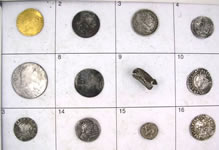












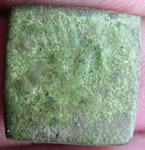
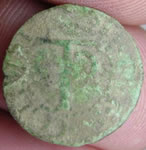


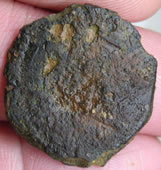

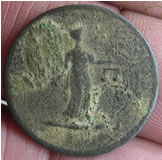





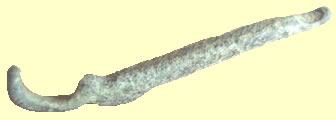


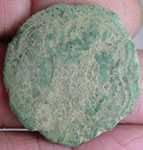


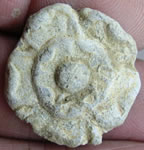











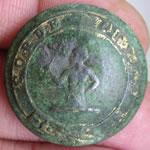




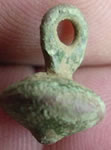
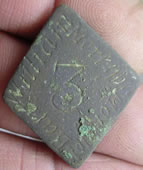




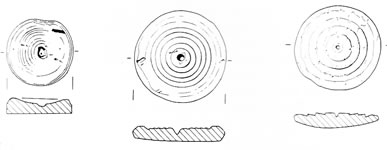


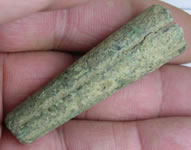








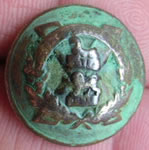


























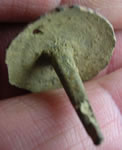























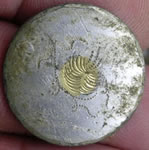

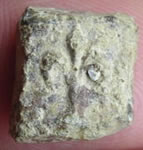





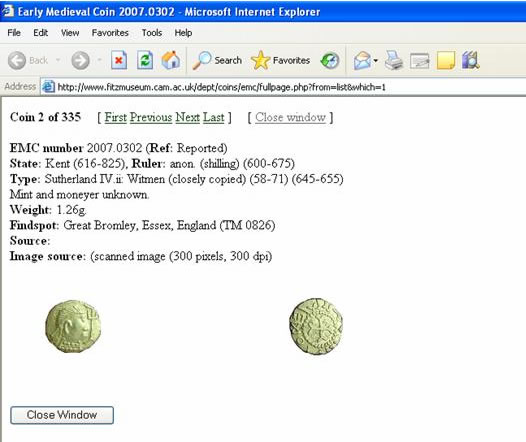

 These gifts could be an animal sacrifice, or a model of the sacrifice. Interestingly it came from the general area that the Roman 'chicken' was found – the cockerel was associated with the god Mercury. Another Roman looking miniature bowl was also found close by.
These gifts could be an animal sacrifice, or a model of the sacrifice. Interestingly it came from the general area that the Roman 'chicken' was found – the cockerel was associated with the god Mercury. Another Roman looking miniature bowl was also found close by.


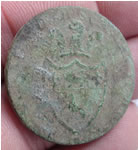
 I got another e-mail in from a guy writing a new Shire publication book on the history of the village shop which should be a very interesting publication.
I got another e-mail in from a guy writing a new Shire publication book on the history of the village shop which should be a very interesting publication. 

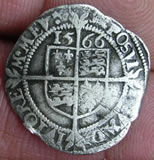



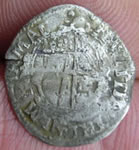


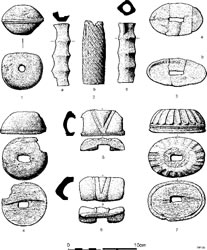















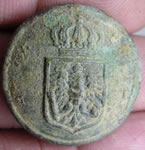




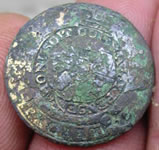





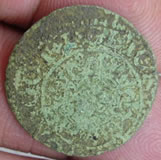















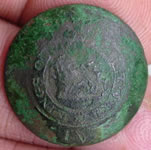

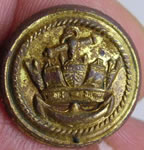



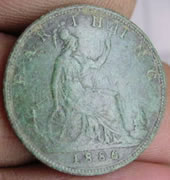









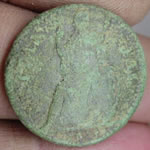












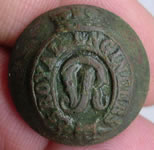
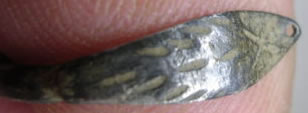


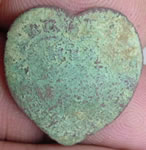












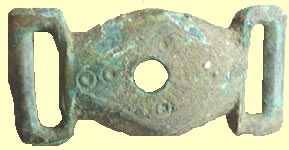 Mike: Roman strap fitting (with ring-and-dot decoration)
Mike: Roman strap fitting (with ring-and-dot decoration) Cal Jeffrey: Medieval annular buckle, Medieval dagger guard and Roman chicken mount
Cal Jeffrey: Medieval annular buckle, Medieval dagger guard and Roman chicken mount




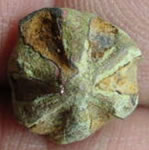

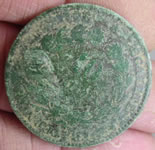
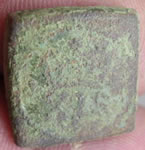



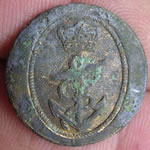
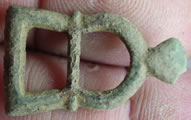


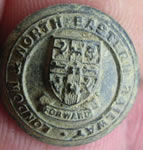
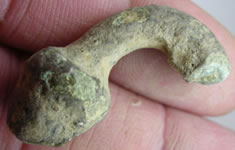





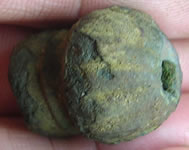







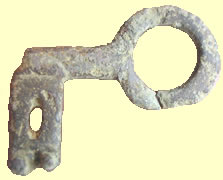
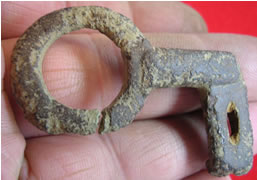
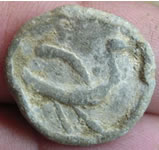

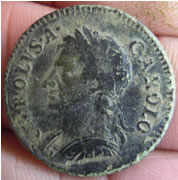
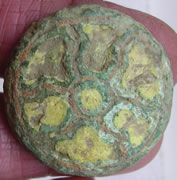


















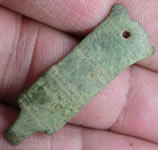






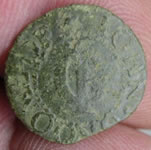


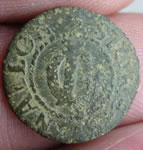











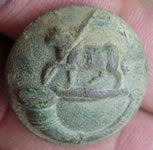





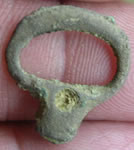
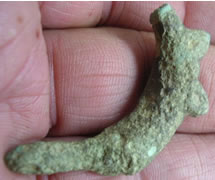


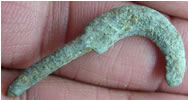


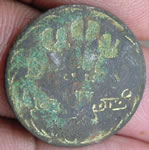





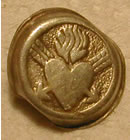

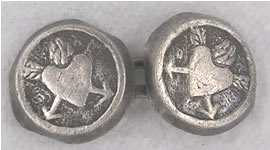



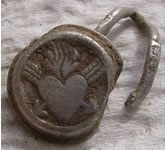





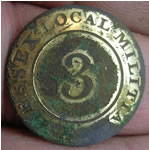

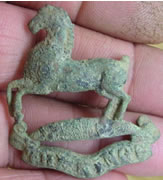




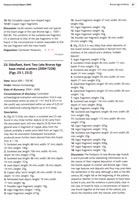





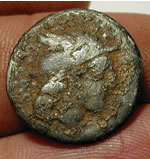













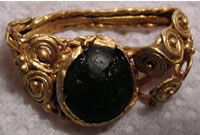


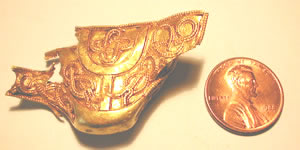
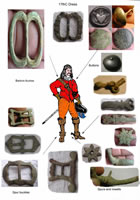
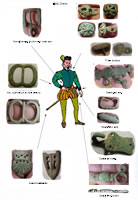










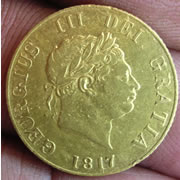
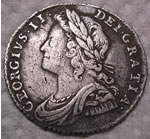



















 Foreign hammered silver
Foreign hammered silver









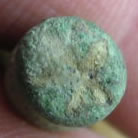

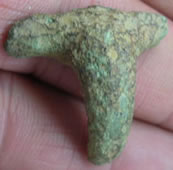





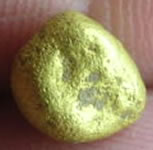


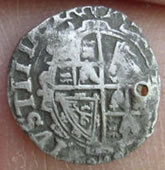
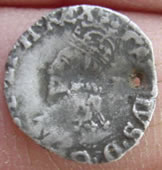



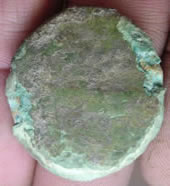


.jpg)
.jpg)
.jpg)
.jpg)
.jpg)
.jpg)
.jpg)
.jpg)
 Sal, Craig's and Chris's other great finds are on the
Sal, Craig's and Chris's other great finds are on the 

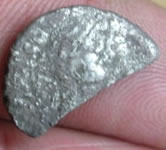







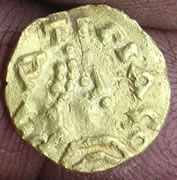




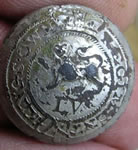





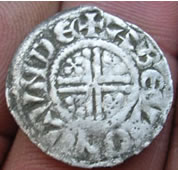
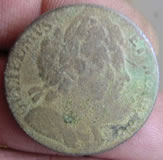




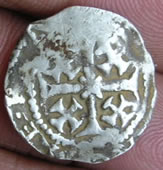







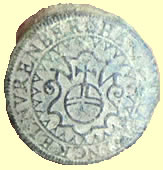









 Houses
of Lancaster and York, 1377-1485
Houses
of Lancaster and York, 1377-1485
